17
May
Fraudulent Claims Undermine Organic Integrity
(Beyond Pesticides, May 17, 2017 Fraud among producers portraying products of chemical intensive agriculture as organic –including those recently identified by the U.S. Department of Agriculture (USDA) Agricultural Marketing Service (AMS) National Organic Program (NOP)— is costly to organic producers and consumers. Imported grains –co rn and soybeans that are largely fed to livestock whose products are sold as “organic”— are the focus of claims that USDA is not doing enough to protect the integrity of the organic label.
rn and soybeans that are largely fed to livestock whose products are sold as “organic”— are the focus of claims that USDA is not doing enough to protect the integrity of the organic label.
The fraudulent documents that are the subject of the USDA alert are typically produced with the intent to circumvent U.S. organic regulations and are often forged along the supply chain with the goal of increasing the value of agricultural commodities imported to the United States. The arrival of soy and corn crops labeled as organic but later testing positive for residues of pesticides prohibited in organic production, has been well documented in recent years. USDA encourages certifying agents and organic operators to remain vigilant when purchasing organic products from suppliers, and warns of fines for up to $11,000 for anyone found in violation of selling products fraudulently labeled as organic. Additionally, the agency encourages anyone suspecting a violation has been committed to make a claim reporting the instance to the NOP Compliance and Enforcement Division.
An investigative article published in the Washington Post earlier this month put the spotlight on this issue by focusing on the importation of corn and soybean shipments labeled as “organic” that later tested positive for pesticides. The article chronicled the shipment of 36 million pounds of soybeans that were shipped to California by way of Ukraine and Turkey in late 2016 and underwent a lucrative transformation during their journey. Starting out in Ukraine as conventionally grown soybeans, by the time the load made its way to a California port they had been labeled as “USDA Organic,” increasing the value of the shipment by nearly $4 million. Receipts, invoices and other shipping records supported the organic designation, though the broker for the soybeans later made a statement admitting that they may have been “provided with false certification documents,” according to the Post.
This was not an isolated incident, and the frequency of complaints related to fraudulent certificates of organic products has grabbed the attention of groups with an interest in maintaining the integrity of the organic label. The Organic Farmers’ Agency for Relationship Marketing (OFARM), an organization that “coordinates the efforts of producer marketing groups to benefit and sustain organic producers,” has been very vocal on the issue of false representation of commodities. Last fall, OFARM joined with Food and Water Watch (FWW) to urge the USDA’s Office of the Inspector General (OIG) “to investigate the integrity of imported organic grains.” Their letter, which cites concerns over the potential for “fraudulent organic imports to undermine consumer expectations and the market for domestic organic producers,” asks the OIG to examine several issues related to the importation of organic goods, including whether the “increased imports present an opportunity for fraudulently labeled organic products to enter the United States,” given the more complicated supply chains, as well as whether organic imports undermine “the opportunity for U.S. producers to get a fair price in the market.” The full letter to OIG, sent September 1, 2016, can be found here.
In response to the Washington Post article, the Organic Trade Association (OTA), which represents a broad spectrum of organic businesses, also expressed concerns over the mislabeling or organic soy and corn and called on the USDA and NOP to “thoroughly and immediately complete investigations” related to the imports in question. In its press release on the subject, OTA also declared that the “oversight of foreign organic suppliers and the enforcement of organic standards must be rigorous and robust” in order to maintain the integrity of the USDA organic label.
The allowance of organic imports has long created costly repercussions for domestic organic farmers. According to the Post article, “the rise of [organic] imports has helped drop prices by more than 25 percent, hurting U.S. organic farmers, many of them small operations.” The increase in organic imports into the U.S. can be attributed to the fact that domestic demand for organic products outpaces the supply. Beyond Pesticides has long advocated for policies and programs that would help close the gap between domestic demand and supply. Investment by the federal government in educational and transitional programs that help reduce the financial burden of conventional farmers that wish to transition to organic production (a process that takes three years) could help close the gap. Additionally, increased funding for organic research has the potential to help domestic organic farmers increase their yields while still adhering to the organic standards maintained by USDA, with input from the National Organic Standards Board (NOSB).
Without the adoption and expansion of policies, research, technical assistance, and credit for organic farmers to increase the domestic supply of organic products, it is likely that fraud will continue to be a factor when importing organic products. John Bobbe, the executive director of OFARM, stated to the Post, “The U.S. market is the easiest for potentially fraudulent organic products to penetrate because the chances of getting caught here are not very high. In Europe and Canada, import rules for organics are much stricter.” In explaining how the breakdowns occur, he continued, “These long international supply chains increase the opportunities for breaks in the chain of recordkeeping, organic certification and verification that the USDA organic seal is built upon. We need the USDA to make sure that organic imports are meeting the same organic standards that U.S. producers do.”
According to a statement made to the Post, USDA officials claim to be investigating the grain shipments in question. However, until improvements are made to the system as a whole, it is likely that products fraudulently labeled as organic may continue to be imported and sold. A factor that contributes to this breakdown, highlighted by The Post, is that under current rules, a company only needs to verify that the shipment they are importing comes from a supplier that has a “USDA Organic” certificate, but that it does not have to be traced all the way back to the point of origin, namely the farm. Additionally, the Post article points to weaknesses in the organic system, such as the infrequency of pesticide residue testing and the practice of giving advance notice before an inspection, as creating vulnerabilities in a system designed to provide consumers with a rigorous standard when choosing to purchase organic food. Without efforts to strengthen USDA oversight, coupled with policies aimed at increasing the domestic supply of organic foods, it is probable that the U.S. will continue to import products that do not meet the organic standard.
With large-scale cuts currently being made to most government programs under the Trump administration, it is more important than ever to call your elected officials and encourage them to support organic farmers through the expansion and protection of policies and research. For more information on the history of organic agriculture and why it is the best choice for your health and the environment, please see Beyond Pesticides’ Organic Food Program Page. You can also check out Beyond Pesticides’ Keeping Organic Strong page, to stay up to state with proposed changes in organic regulations and farming practices, and to find ways to get involved in preserving organic integrity.
Source: Washington Post, Organic Trade Association, OFARM Letter to OIG, USDA
All unattributed positions and opinions in this piece are those of Beyond Pesticides.










 The study, published in
The study, published in 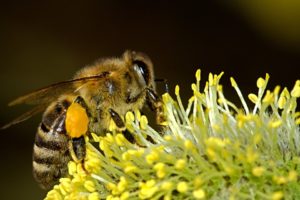
 ucts. Those industry groups that are leading the charge to preempt local government action have a vested economic interest in selling toxic products and services and stifling the market from moving toward greener alternatives. Passage of the bill in Maine would serve as a huge blow to many local communities that currently regulate pesticides more stringently than the state, as the bill also includes language voiding any local regulations that predate the bill.
ucts. Those industry groups that are leading the charge to preempt local government action have a vested economic interest in selling toxic products and services and stifling the market from moving toward greener alternatives. Passage of the bill in Maine would serve as a huge blow to many local communities that currently regulate pesticides more stringently than the state, as the bill also includes language voiding any local regulations that predate the bill.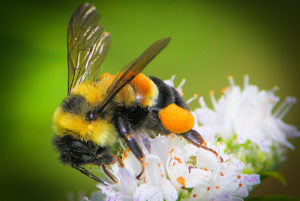
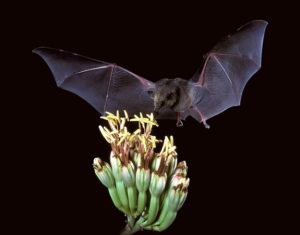 The Mexican long-tongued bat’s range extends from the southwest of the United States through Mexico and into Central America, according to the International
The Mexican long-tongued bat’s range extends from the southwest of the United States through Mexico and into Central America, according to the International 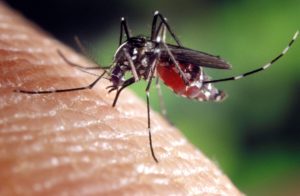 The trial is the second U.S. test conducted with the naturally occurring Wolbachia bacteria in Aedes aegypti mosquitoes, developed by the Kentucky-based company MosquitoMate. The first test occurred in Clovis, California, last year. In September 2016, the U.S. Environmental Protection Agency (EPA), which registers mosquito control products, approved and expanded an
The trial is the second U.S. test conducted with the naturally occurring Wolbachia bacteria in Aedes aegypti mosquitoes, developed by the Kentucky-based company MosquitoMate. The first test occurred in Clovis, California, last year. In September 2016, the U.S. Environmental Protection Agency (EPA), which registers mosquito control products, approved and expanded an  Nine organizations filed an
Nine organizations filed an 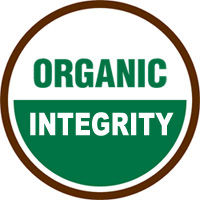

 The new law, introduced by Assembly chair Elvi Gray-Jackson and vice chair Dick Traini, was the product of months of community stakeholder meetings and input. “That’s the way I like to do business in this community,” Ms. Gray-Jackson said to KTUU on the night the bill was passed. “Bring all the stakeholders together and have them work it out so we don’t waste a lot of time at this level.”
The new law, introduced by Assembly chair Elvi Gray-Jackson and vice chair Dick Traini, was the product of months of community stakeholder meetings and input. “That’s the way I like to do business in this community,” Ms. Gray-Jackson said to KTUU on the night the bill was passed. “Bring all the stakeholders together and have them work it out so we don’t waste a lot of time at this level.”
